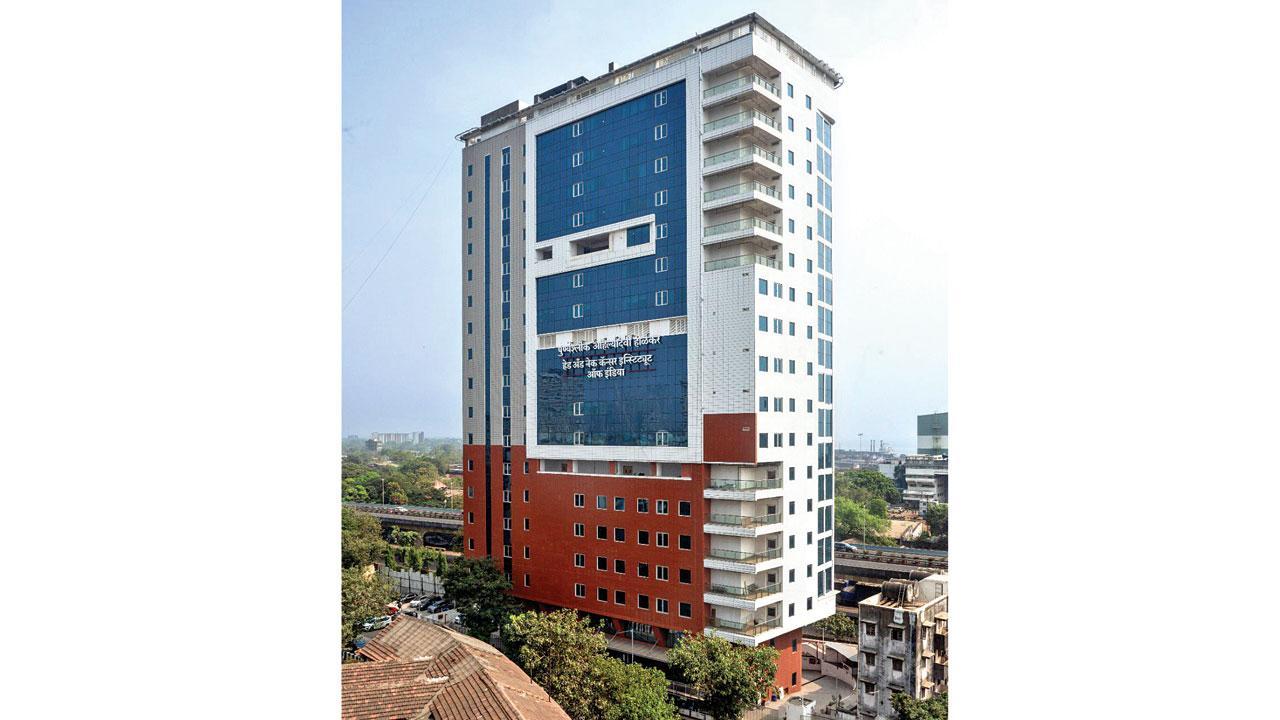The hospital has pulled 13,000 patients in six months

HNCII was established on BMC land, where a maternity home was earlier situated
Key Highlights
- HNCII has seen 13,574 patients on an OPD basis since August
- Hospital comes under Public Trusts Act under which charitable trusts operating hospitals
- This fund is then used to reserve 10 per cent of operational beds
Dockyard’s Punyashlok Alhaiyabai Holkar Head and Neck Cancer Institute, India (HNCII) has seen 13,574 patients on an OPD basis since August when it began its operations. Amjad Khan, a rickshaw driver in his mid-40s, arrived in Mumbai on Tuesday from Uttar Pradesh for cancer treatment for his uncle. Five years ago, he was also diagnosed with cancer and had his surgery done at Tata Memorial Hospital (TMH).
ADVERTISEMENT
This time, instead of TMH, he chose HNCII for his relative. It took him more than 24 hrs to reach Mumbai. The last time he was here, he was operated on at TMH by Dr Sultan Pradhan, who now runs this new cancer institute. “There aren’t many good cancer treatment hospitals back home,” he said.
While it was the familiarity with the doctor in charge that brought him to the Holkar hospital, another reason is the long waiting time at TMH. The HNCII hospital was established on BMC land, where a maternity home was earlier situated. “It is based on public-private partnership; our rates are the same as Tata Hospital rates,” said Reshma Naidu, trustee of CanCare trust which runs the hospital, and daughter of Dr Pradhan.
 The hospital comes under the Public Trusts (BPT) Act, 1950
The hospital comes under the Public Trusts (BPT) Act, 1950
The hospital comes under the Public Trusts (BPT) Act, 1950, under which charitable trusts operating hospitals, nursing homes, or maternity homes must contribute two per cent of their income to the Indigent Patient Fund (IPF) in return for government subsidies on land, taxes, electricity, and building regulations.
This fund is then used to reserve 10 per cent of operational beds for indigent patients for free treatment and another 10 per cent are reserved to provide treatment at subsidised rates for economically weaker sections. To avail of this scheme, one only needs to provide a ration card or a tahsildar’s certificate as proof. Twenty-two of such patients have been admitted since August. TMH on the other hand provides free treatment to 60% to 70% of its patients and one third of them are treated at very subsidised rates.
Khan was unaware of the rates or the scheme at this hospital but he said it was because his uncle was still in consultation with the doctor when mid-day spoke with him at the hospital. Out of the total patients who have visited the hospital so far, 2,763 men and 1,791 women have been from the city. Meanwhile, like Khan, most of them (6,878 men and 2,142 women) were outstation patients. “About 45% of them have been from Maharashtra and then there are many from Uttar Pradesh and even North Eastern states. But we have had very few patients from South India,” Naidu said.
Cancer patients incur large expenses on medicines while on chemotherapy, which are to be consumed multiple times. These can range between R50,000 to R1 lakh. “So a medicine with Rs 50,000 on MRP would be made available to the patient at around Rs 15,000 to Rs 20,000,” Naidu said. Dr Pankaj Chaturvedi, Head and neck cancer doctor at TMH, said, “At TMH, we negotiate with the government for the benefit of the patients and make a medicine available to them at 70% to 80% less rates than the MRP.”
The doctors who sit at the hospital were with TMH in the past. “In terms of the final bill of the patient, TMH charges a minimal amount for the cost of pharmacy but in our case, it is a little higher. On the fixed charges in the schedule, it is the same but for the pharmacy, the charging is a little different. That is because of the large support it receives from the government. We function through the funds through philanthropists,” Naidu said.
13,574
No of patients admitted since August
 Subscribe today by clicking the link and stay updated with the latest news!" Click here!
Subscribe today by clicking the link and stay updated with the latest news!" Click here!







